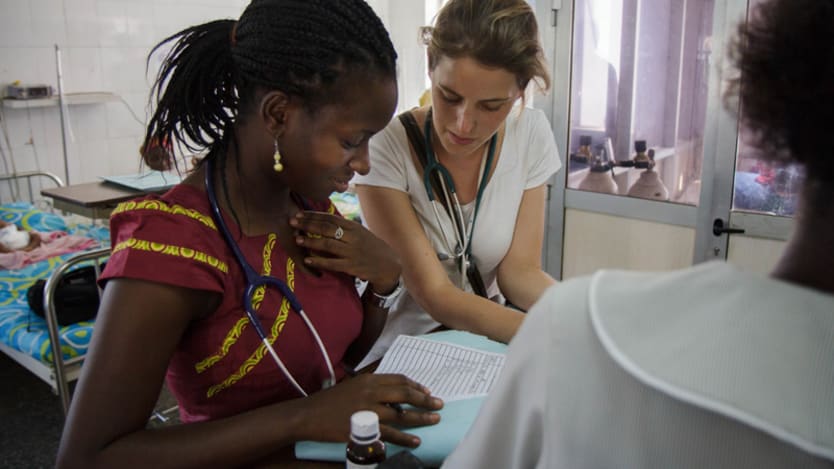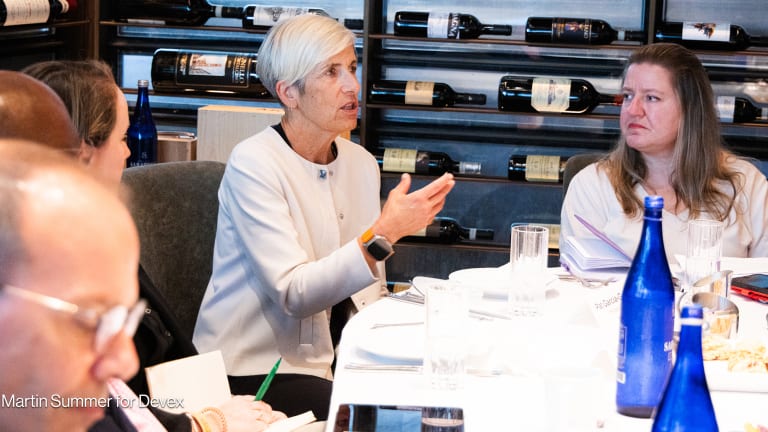
World Health Day provides a unique opportunity to look at health through a global lens and shed light on the numerous challenges that communities around the world face when trying to access health care.
Millions of people have no control over their health because services and workers are completely inaccessible or nonexistent. For those who can access treatment, the World Health Organization estimates that the price of health care pushes 100 million people into poverty each year.
This is the first WHD of the Sustainable Development Goals era, with the aspiration of healthy lives for all and achieving universal health coverage by 2030. The WHO describes UHC as enabling all people to obtain the health services they need without suffering financial hardship when paying for them.
The SDGs build on the approach of Millennium Development Goals, which targeted particular health areas such as maternal and child health and infectious diseases such as HIV and Malaria. The SDGs have a wider vision that aims to strengthen health systems and address specific health care challenges through Goal 3, and several other goals focus on addressing the broader social and environmental determinants of health.
The gains in the topic areas highlighted in the MDGs have arguably been very significant overall, although some countries, especially in sub-Saharan Africa, have made limited progress. The progress on the MDGs in many countries demonstrates how — with improved funding, effective interventions and political will — major advances can be made.
However, the focus on specific health themes in the MDGs meant that funding flowed to the initiatives directly tackling them, leaving other areas such as noncommunicable diseases, mental health and safe surgery wanting. Goal 3 of the SDGs therefore provides the opportunity to build on the disease specific achievements of the MDGs while addressing a much wider range of health problems that affect poor populations.
Achieving universal health coverage
Read related stories:
► Ahead of World Health Day, 3 questions for a UHC proponent
► How should we measure access to health care?
► The potential for inclusive businesses gains attention in SDG era
As we seek to reach universal health coverage by 2030, the development community must focus on the following key achievements.
Training health workers: According to the WHO, the world will be short of 12.9 million health care workers by 2035. The figures speak for themselves and it is clear that there has to be a major global effort to recruit, educate and train health workers.
Building resilient health systems: A stronger health system results in better physical and mental health of individuals and communities, and ultimately leads to a more resilient and dynamic society. It also contributes to economic growth, which in turn allows investment in health systems.
Tackling non-communicable diseases in low- and middle-income countries: Infectious diseases continue to be a threat for low- and middle-income countries, as the Ebola outbreak in West Africa confirmed. But the biggest health challenge across the world is the growing mortality and morbidity from non-communicable diseases together with the unmet need for surgery.
Ensuring gender equality: Fulfilment of the untapped potential of half of the world’s population must be prioritized. The importance of women and girls is recognized in SDG 5, which focuses on gender equality and empowerment of women. We have to ensure that women and girls are given the same opportunities as men to access health care services and to make their own free decisions when it comes to their health.
Recognizing the social and environmental determinants of health: The correlation between health and poverty is well established. Poor health directly affects household income, and in turn, poverty can perpetuate poor health. While income inequality represents a challenge, other factors such as education, employment, social disadvantage and environmental exposures also need to be tackled in order to improve health around the world.
The unique role of partnerships
THET’s unique approach is to scale-up support for health partnerships, in particular between professionals at the National Health Service and those in a range of low- and middle-income countries. Health partnerships move the focus from old paternalistic models of development toward a new approach where solutions to problems result from mutual respect and the bidirectional flow of knowledge.
They build long-term capacity by educating, training and supporting health workers in low- and middle-income settings, helping to deliver higher quality services and strengthening health systems. This means that more and more people will be able to access essential health services that are vital to their health and well-being.
Many of these newly trained health workers also gain the skills and confidence to train their colleagues as well, and so by training one health worker we sow the seeds of a future workforce that can meet the challenge of delivering a health service that is available to all. At the same time U.K. health professionals often report that they too learn a great deal about how to cope with a range of challenges with very limited resources and that this experience can inform their practice in the U.K.
During my time as chair of THET, the organization provided expert support for hundreds of health partnerships and trained 52,000 developing country health workers, with women accounting for over half of the participants.
To be successful, partnerships need to work on multiple levels, with networks of partners, across sectors and in many countries. In addition, working hand-in-hand with colleagues in the “global south” — building trust over time to find solutions to seemingly intractable problems — must remain at the heart of health partnerships. By working with local health professionals and others, partnership projects have a unique insight into health care needs of the developing country they are working in, which ensures that project work is not dictated from the United Kingdom, but rather developed together as equals.
Many health partnerships are providing health services for isolated rural areas, where the nearest care point may be a 70 mile journey away. Through health partnerships, THET has helped train over 3,800 community and traditional health workers who provide frontline care for neglected regions.
Today, on the occasion of the WHD, we are renewing our commitment to support health workers across the world and to promote the health partnerships model with the goal of improving access and quality of health care and ultimately achieving UHC.
Of course, health partnerships aren’t the only answer to inadequate health care. Appropriate financing for UHC through taxation, improved access to cheap generic drugs and technology, and a willingness to address the social and environmental determinants of health are all required to achieve health for all. But through a scale-up of health partnerships, we can ensure that we are supporting the backbone of any strong health system, health workers, and giving them the tools to provide better care for everyone, now and in the future.
Join the Devex community and access more in-depth analysis, breaking news and business advice — and a host of other services — on international development, humanitarian aid and global health.








